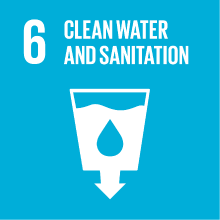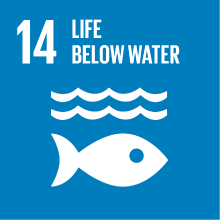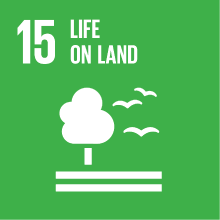MICROBIOLOGY - LAB
- Academic year
- 2023/2024 Syllabus of previous years
- Official course title
- MICROBIOLOGIA - LABORATORIO
- Course code
- CT0369 (AF:456712 AR:249730)
- Teaching language
- Italian
- Modality
- On campus classes
- ECTS credits
- 0 out of 6 of MICROBIOLOGY
- Subdivision
- Class 3
- Degree level
- Bachelor's Degree Programme
- Academic Discipline
- BIO/19
- Period
- 1st Semester
- Course year
- 3
- Where
- VENEZIA
- Moodle
- Go to Moodle page
Contribution of the course to the overall degree programme goals
Principal educational objectives of this teaching are: 1) to develop the ability to identify and discern the different microorganisms depending on different colonization environment; 2) to stimulate a systemic approach in the determination and resolution of phenomena regarding microbiological aspect; 3) to encourage for a transversal and multidisciplinary approach in framing possible and useful intervention microbiological methodologies; 4) to provide theoretical scientific basis for an appropriate experimental approach, both with classical and advanced technologies; 5) to know how to process and evaluate the experimental data collected, in order to formulate the most appropriate line of intervention and management; 6) to instil a precise and proper use of scientific language.
ATTENTION: STRUCTURE AND CONTENT OF THE COURSE COULD CHANGE AS A RESULT OF THE COVID-19 EPIDEMIC.
Expected learning outcomes
1.1. To know the morphological features characterizing the different microorganisms for their recognition.
1.2. To know the elements characterizing the physiology and the behaviour expressed by the different microorganisms in a particular colonization site, depending on its chemical-physical characteristics, in a specific environmental context.
1.3. Understanding the best intervention strategy, both for a potential use of microorganisms and for their removal, based on the biochemical-functional characteristics expressed site-specifically by the microorganisms.
2. Ability to apply knowledge and understanding
2.1. Knowing how to recognize microorganisms and their interactions.
2.2. Knowing how to frame the abiotic elements and environmental factors that influence the establishment of a microbiotic colonization process.
2.3. Being able to propose an intervention strategy, taking into account the chemical-physical properties of the matrices involved, to better manage a colonization process.
3. Ability to judge
3.1. Knowing how to interpret, critically evaluate and discuss the results of experimental analysis, to identify and characterize microorganism’s processes, in particular focusing the dependence on the type of rooting matrix.
3.2. To develop the ability to frame the various chemical-physical-biological-environmental information collected for the most real definition of the (micro)environment and the most suitable and sustainable intervention.
4. Communication skills
4.1. Being able to communicate the knowledge learned and the results in a coherent and rigorous manner, using an appropriate scientific language.
4.2. Being able to interact with the teacher and with the classmates in a respectful and constructive way.
5. Learning skills
5.1. Being able to take notes, showing autonomy in the identification of the salient aspects of the concepts expressed in class and of the focal points of laboratory experiments.
5.2. Being able to search and use reference texts and bibliography.
5.3. Being able to explain the theoretical topics with the ability to contextualize.
Pre-requirements
Contents
PROCARIOTIC AND EUCARIOTIC CELL
Features and differences. Plasma membrane: biochemical structure, functions; differences. Genetic heritage: DNA, genes and genomes; gene reproduction and recombination. Mitosis and meiosis. Replication. Mutations.
rDNA TECHNOLOGY
Outline of applications used in genic recombination in environmental applications (FISH, restriction enzymes, antibody production, expression vectors, cloning, cDNA and microarray, genomic library).
VIRUS
Morphological types. Virulence.
BACTERIA
Morphological types of Bacteria. Cell membrane: morphology and functions. Periplasmic space, external membrane, capsule. Wall: chemical structure, morphology, functions; differences between Gram (+) and (-) bacteria: Gram staining. Archeabacteria wall. Cytoplasm and cell inclusions. Ribosomes. DNA. Scourges and fimbriae. Spores: morphological-structural characteristics, properties. Archeabacteria: evolutionary collocation; structural and functional characteristics; extreme ecological niches. Cyanobacteria: structural and functional characteristics.
PROTISTS
Outline of morphology, physiology and ecology of Protozoa (Ciliates, Flagellates, Amoebas, Mixomycetes) and Microalgae.
FUNGI
Classification. Molds and Yeasts: distinctive morphological characters. Fungal wall: chemical composition, structure, functions. Iphae: types, structure, functions. Cell membrane: chemical composition, structure, functions. Cellular endomembrane system. Core and nucleoli. DNA and RNA in Mushrooms: chromosomal and genomic peculiarities. Mitochondria. Citosol and cytoskeleton. Vegetative structures. Metabolism: symbionts; saprophytes; parasites. Life cycle: gamic phases and reproductive characteristics in the different phyla.
LICHENS
Morphological-structural features. Symbiosis concept: functional and biochemical interactions between mycobionts and photobionts. Rooting capacity on different substrates; ecological succession. Reproduction.
PART II
BIODETERORATION
a) ENVIRONMENTAL FACTORS
Environmental conditions for active cell growth or quiescence: tolerance limits; inhibition/increase in the biodeteriogen’s biochemistry processes. Temperature: Arrhenius curve, optimal temperature range. Oxygen: aerobiosis and anaerobiosis. Light: phototropism and photoperiodism, heliophilia and photosynthesis; quality, quantity, duration; high energy radiation. Water availability: water activity, RH; leaching. Air currents. Osmotic pressure and salt concentrations. pH: optimum of activity. Micro and macro site-specific environmental.
b) SUBSTRATE CHARACTERISTICS
Microorganisms in environmental matrices. Peculiarities favouring engraftment: morphology, chemical-physical characteristics, bioreceptivity. Conservation status: exposure time to environmental factors and effect and types of pollutants (biodegradable, (non)conservative, particulates, bioaerosol).
c) MICROBIC BIODIVERSITY
Cellular activity and tropism. Auto- and etero-trophism. Growth rates. Biogeochemical cicles and microbic transformation of C, N, P, S, Fe. Biodeterioration: (bio)physical and (bio)chemical phenomena and processes; colonization, engraftment and biological activity; molecular structures, enzymes, waste products.. Biofilm: types, phases, EPS. Gram (+) and Gram (-) Bacteria, Archeabacteria, microAlgae and Cyanobacteria, Fungi (Yeasts and Molds), Protist. Microbiological sampling in different environment. Growth media (generic, selective, specific). Microorganism’s dentification: classic (colony’s texture, microscopic observation, coloration; biochemical activity) and molecular (DNA extraction, rRNA,; electrophoresis; blotting) techniques. mVOC and mycotoxins: metabolism, sources, chemical types, toxicity through microorganisms and in different enviroments. Biocides: types, ecotoxicology
Referral texts
To deepen the topics covered:
- M.T. Madigan, J.M. Martinko, K.S. Bender, D.H. Buckley, D. A. Stahl Brock. Biology of microorganisms. Pearson Learning Solution.
- S. Donadio, G. Marino. Microbial biotechnology. Ambrosian Publishing House.
- P. Barbieri, G. Bestetti, E. Galli. Microbiologia ambientale ed elementi di ecologia microbica , CEI-Casa Editrice Ambrosiana, Milano
Assessment methods
Accuracy degree of the answers and ownership of used scientific language will contribute to the positive outcome of the test.
Type of exam
Teaching methods
Mandatory Lab sessions will support to learn basic instruments and aseptic working.
Further information
Accommodation and Support Services for students with disabilities or specific learning disorders: Ca 'Foscari applies the Italian Law (Law 17/1999, Law 170/2010) for support services and accommodation available to students with disabilities or with specific learning disorders. In case of motor, visual disability, hearing or other disabilities (Law 17/1999) or a specific learning disorder (Law 170/2010) and support is needed (assistance in the classroom, technological aids for exams) o individualized exams, material in accessible format, notes collection, specialized tutoring to support the study, interpreters or other), contact the Disability and DSA office: disable@unive.it.
SUSTAINABILITY '
• 1 CFU: lecture notes and materials for in-depth analysis and online self-assessment.
• 1 CFU: course contents dedicated to deepening biocide use with moderate impact both on environment and human health, especially when used in indoor environments; furthermore, in particular, by considering the use of natural products and/or by causing primarily metabolism/reproduction/ecology disturbance.
2030 Agenda for Sustainable Development Goals
This subject deals with topics related to the macro-area "Natural capital and environmental quality" and contributes to the achievement of one or more goals of U. N. Agenda for Sustainable Development



